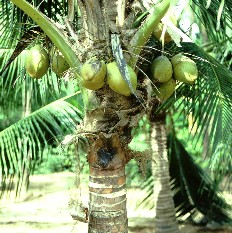Worldwatch Perspective: Nothing is Simple, Not Even Biofuels
Each gallon of corn ethanol used reduces greenhouse gas emissions by about 13 percent compared to gasoline.
Photo by Adam Weiss via Flickr
If you want to do something right, then it's not going to be simple. Unfortunately, this is a general rule of life. It's true not only for cooking, relationships, and work, but also for understanding what "sustainable" biofuels really are.
A recent article in Science [1] by Renton Righelato and Dominick V. Spracklen (with the World Land Trust [2] and the University of Leeds [3], respectively) has prompted a flurry of discussion about whether biofuels are a good idea or not. In their article, "Carbon Mitigation by Biofuels or by Saving and Restoring Forests?" they note that the world's richest natural stores of carbon are in forests. They point out that, over a 30-year period, more greenhouse gas emissions can be avoided per acre of land by restoring forests than by using current biofuel technologies.
This analysis has inspired news articles and blogs with titles such as "EU biofuel policy is a 'mistake' [4]" and "Ethanol dirtier than regular oil [5]." It has led skeptics worldwide to question whether the accelerating global investment in biofuels is really worth it, both as a renewable alternative to fossil fuels and as a remedy for climate change.
But does this mean that promoting all biofuel technologies is wasteful and counterproductive? Not really. As it turns out, even Mr. Righelato is supportive of so-called "second-generation" biofuels—or liquid fuels derived from grasses and woody materials. In the article, he praises the idea of using "woody biomass" as a way to conserve carbon in soil and plant matter while also cultivating a biofuel feedstock.
Of course, the "first-generation" biofuels we use today are not very sustainable. Ethanol made from corn—the most popular biofuel in the United States—has a particularly low sustainability score, although each gallon of corn ethanol used still reduces greenhouse gas emissions by about 13 percent [6] compared to gasoline.
If that 13-percent benefit comes from using land that would have been used to grow corn anyway, then most people would say it's a modest improvement. But if that land was supposed to be set aside for conservation, and is converted to corn instead, then we have a problem: we have just caused more environmental damage than we can make up for by using corn ethanol. Even more damaging would be choosing to convert intact forestlands—particularly intact tropical forests—to cropland for growing biofuels.
Are forests and other conservation lands being converted to cropland for biofuels? In some cases, yes. Palm oil plantations for biodiesel in Indonesia and Malaysia are the most infamous example of this. In Brazil, the savannah and edges of the Amazon are also being eaten away by expanding agriculture production, some of which is for biofuels. (Most of the pressure, however, comes from cattle ranching operations and the rising demand for soybeans [7] for animal feed.)
Other Worldwatch Articles You Might Enjoy
- Biofuels in Africa May Help Achieve Global Goals, Experts Say [7]
- Europe's Use of Biofuels Nearly Doubles [7]
- Food and Fuel: Biofuels Could Benefit World's Undernourished [7]
The expansion of world croplands for biofuels is not inevitable, and even most policymakers in the European Union realize it is not desirable. Second-generation biofuels, which are produced using typically non-edible, cellulosic plant matter, are much more energetically efficient than current-generation biofuels. Moreover, cultivating these perennial grasses and trees provides net environmental and climate benefits, whether or not the plant matter is ultimately converted to fuel.
But that doesn't mean all of our energy should come from grasses and forests. A sustainable future depends on a diversified energy supply—one that takes advantage first of savings from energy efficiency, and then relies on a range of renewable energy sources, including wind energy, solar power, and fuels derived from biomass.
In nearly every human endeavor, policymakers, consumers, and others must look at all of the impacts of their decisions to avoid unintended negative consequences. In the case of biofuels, all efforts should be taken to ensure that forests and grasslands are preserved and restored wherever possible.
So, nothing is simple, but nothing is impossible either. Biofuels can do harm—but they can do a lot of good too. When evaluating them, as when evaluating any technologies, it is imperative that we take the time to consider the full range of factors to assess whether they are really sustainable or not.
Raya Widenoja is a researcher and biofuels expert at the Worldwatch Institute. In August 2007, Worldwatch released its landmark report Biofuels for Transport [7], which discusses in detail many of the issues raised here.
This story was produced by Eye on Earth [7], a joint project of the Worldwatch Institute [7] and the blue moon fund [8]. View the complete archive [8] of Eye on Earth stories, or contact Staff Writer Alana Herro at aherro [AT] worldwatch [DOT] org with your questions, comments, and story ideas.
http://www.worldwatch.org/node/5319
Links:
[1] http://www.sciencemag.org/cgi/content/summary/317/5840/902?maxtoshow=&HITS=10&hits=10&RESULTFORMAT=&fulltext=Carbon+Mitigation+by+Biofuels+or&searchid=1&FIRSTINDEX=0&resourcetype=HWCIT
[2] http://www.worldlandtrust.org/
[3] http://www.see.leeds.ac.uk/
[4] http://news.bbc.co.uk/1/hi/sci/tech/6949861.stm
[5] http://gristmill.grist.org/story/2007/8/18/113320/069
[6] http://www.sciencemag.org/cgi/content/abstract/311/5760/506?maxtoshow=&HITS=10&hits=10&RESULTFORMAT=&fulltext=Ethanol+Can+Contribute+to+Energy+and+Environmental+Goals&searchid=1&FIRSTINDEX=0&resourcetype=HWCIT
[7] http://green.nationalgeographic.com/environment/habitats/last-of-amazon.html
[8] http://www.bluemoonfund.org/
Jerome Weingart and Associates
Consultancy Services for Sustainable Development
4001 9th St. N, Suite 1108
Arlington VA 22203 (USA)
703-524-8372
703-625-4428 (mobile)
866-888-5043 (global fax to my Internet account)
jmweingart@aol.com
A member of the Global Village Energy Partnership
www.gvep.org
Get a sneak peek of the all-new AOL.com.

No comments:
Post a Comment